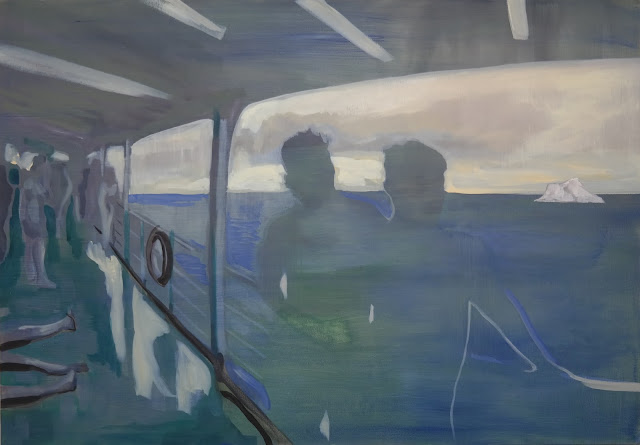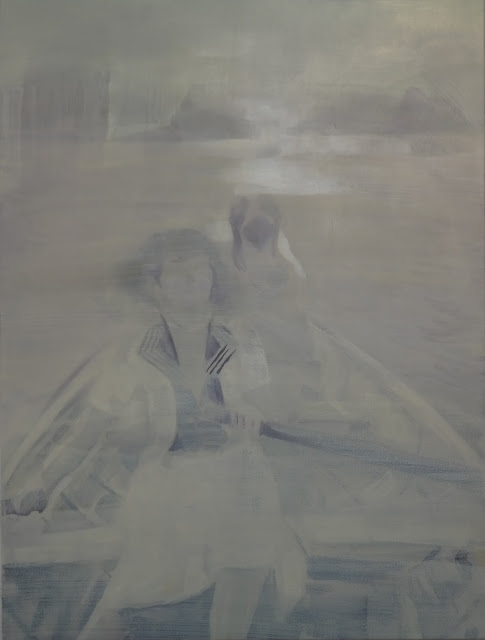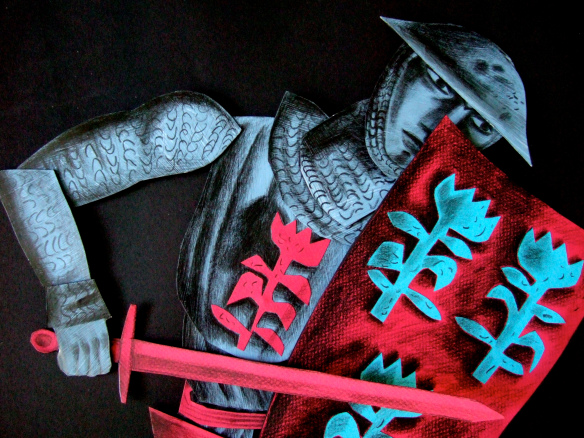![]() |
| Peter Lanyon, Soaring Flight, 1960, Arts Council (copyright artist's estate) |
I always look forward to the autumn exhibition season, and this year the harvest is particularly, er, fruitful. Nobody needs to be told to go and see the Goya portraits at the National Gallery, but you might not know that the curator is Xavier Bray of Dulwich Picture Gallery, without whom there would have been no Ravilious show. He's my ideal kind of art historian, knowledgable and serious but also down-to-earth and good fun.
I've no doubt people are queuing round Trafalgar Square to see the show, as we British love our portraits as we did in Gainsborough's day, but there are other exhibitions that are well worth seeing. One of the reasons why the Courtauld Gallery is my favourite London venue is that you never know what they will show next. A glance through the gallery's
exhibitions archive shows just how eclectic the programme is, with recent outings for Goya, Egon Schiele, Jasper Johns, Durer, Picasso and Peter Lely. It is a rather male list, come to think of it...
![]() |
| Peter Lanyon, Thermal, 1960, Tate (copyright artist's estate) |
After Goya's often gravity-defying witches comes post-war aerialist, Peter Lanyon, an artist who meant nothing to me until
Dr James Fox explained how his paintings worked. Lanyon seems something of a surprise choice for the Courtauld, but an inspired one, following
Towner's William Gear show at a time when post-war British abstraction is not getting much attention.
Not that Lanyon was an abstract artist in the way that Ben Nicholson was in the 1930s, when it was strictly circles and squares only. Lanyon worked that rich margin between the abstract and the real, which in his case meant the landscape, coast and sky of Cornwall; his gliding paintings evoke (I imagine, having never done it) the strange experience of flying alone and unpowered, like a bird with prosthetic wings. For a more in-depth analysis, have a look at
Laura Cummings' review.
![]() |
| David Jones, Capel-y-Ffin, 1927, Nat Museum Wales (copyright artist's estate) |
Another artist who portrayed the invisible air as a palpable thing, albeit from the ground, was David Jones, the Anglo-Welsh artist whose work is fiercely championed by fans but not easily appreciated by people who haven't put a certain amount of time into the task. Actually this isn't quite true. For a few years in the 1920s David Jones was a bright star, a watercolourist who pleasantly combined sundry influences (Cezanne, Japanese prints, Celtic design) to create beautifully designed, distinctive paintings of places he loved, from Brockley to Capel-y-Ffin.
He was one of an exciting group of painters in a medium undergoing an unlikely 20th century renaissance, and something of a leader. Ravilious and Bawden admired his dry brush technique, and it was Jones who, as Secretary, invited the latter to show with the Seven and Five in 1932.
![]() |
| David Jones, The Terrace, 1929, Tate (copyright artist's estate) |
But Jones was not content with his pleasing landscapes. Never a believer in traditional perspective or classical values, he moved further and further from simple representation. In the early 1930s, having written his extraordinary Great War poem 'In Parenthesis', he suffered a severe nervous breakdown, and it is tempting to see the increasing strangeness of his paintings at this time as a symptom of mental disturbance. One could say as easily that Van Gogh's greatest paintings were the product of madness, and I disagree profoundly with this view for reasons I imagine are fairly obvious.
David Jones didn't paint his extraordinary, melting, multi-layered paintings because he was going mad but because he was trying to push himself ever further towards a particular kind of vision. In a way he achieved this layering of realities, from everyday life as he saw it to Arthurian myth, most effectively in his poetry, yet the paintings give a great deal to the patient viewer. You can't simply look at a Jones watercolour and move on. You have to explore it. There are whole worlds contained in his more experimental paintings and sometimes it takes a while just to identify different objects, structures, layers. Everything is transparent.
![]() |
| David Jones, Flora in Calix-Light, 1950, Kettle's Yard (copyright artist's estate) |
That this was a deliberate approach is clear when you look at his copper engravings from the 1920s, which show a similarly multi-layered approach. What is so remarkable about his work in watercolour (to which he added smudged graphite for its silvery quality and white body paint for substance) is his ability to dissolve boundaries, abandon traditional ideas of space and yet retain a kind of sense. There's a suggestion of medieval manuscript illumination in the pictures, but mixed in with the flat world of signs and symbols - chalices, thorns, unicorns - is a real, three-dimensional world in which land and sea dissolve into air which is translucent yet solid.
I think David Jones was a remarkable artist, far more adventurous than his mentor Eric Gill. Simon Martin and the Pallant House Gallery succeeded in persuading people that Edward Burra was a great artist despite choosing watercolour rather than oil paint as his medium (
current auction estimates for his work are fairly shocking). Jones is harder to get into, but worth the effort.
'Soaring Flight: Peter Lanyon's Gliding Paintings' is at the Courtauld Gallery.
'David Jones: Vision and Memory' is at Pallant House Gallery, Chichester. The accompanying book, by Ariane Banks and Paul Hills, covers engravings and inscriptions as well as watercolour, and is thoroughly recommended.






























































